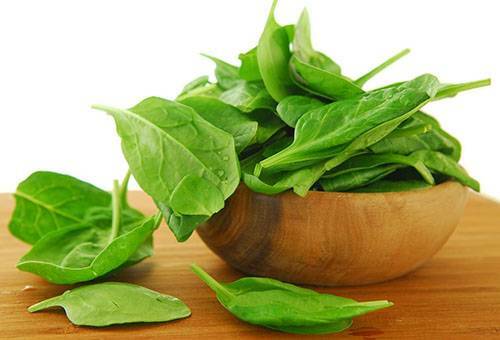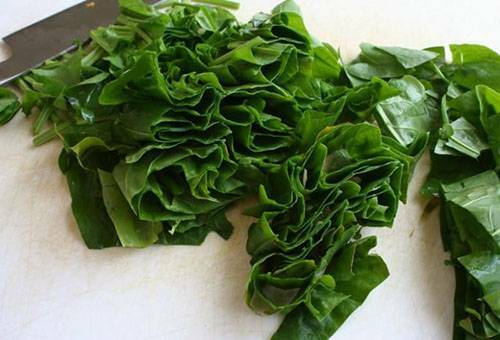Contents:
- Sorrel - what is it?
- How to save sorrel for the winter?
- Method 1: pickling
- Method 2: freezing
- Method 3: preservation
The best thing we can do for our body in the cold season is to make it hot with fresh vegetables such as green borsch with sorrel. But how can you save the sorrel, you ask. As easy as pie! Harvesting sorrel for the winter is not as difficult as it seems. We have prepared for you three proven ways to preserve this green ingredient.

Sorrel - what is it?
Each of the readers probably saw sorrel many times. The fact is that this unpretentious plant can live anywhere: at least in the garden, even on the street by the road. Outwardly, it is not noticeable and looks like a plantain. The only difference is that the leaves of the sorrel are thin, smooth and have an oblong shape. Well, the main feature is that it can be eaten - and the taste of this plant is moderately sour - and thus maintain your body in tone! You can both pick up sorrel and cook it raw - immunity will still thank you.
By the way, in Russia, sorrel was used only in the XVIII century, despite the fact that people were literally under their noses, or more precisely, under their feet. For a long time it was not recognized as an independent plant. In the meantime, in France, sorrel was used as a base for the recipe of any national dish. Probably, with the light hand of French cuisine, very popular in Russia in the era of the Enlightenment, sorrel and became a new culinary discovery in Russia.

How to save sorrel for the winter?
For accounts of its taste, the plant is often used in hot dishes and in salads. The most popular recipe is a soup or soup with sorrel, very tasty and, most importantly, a healthy dish. To feast on such soup all year round, folk craftsmen invented some ways. We'll talk about them.
But before you prepare the product for conservation, it is necessary to do the following:
- thoroughly rinse the leaves, or even better if you scald them with boiling water;
- cut stems;
- traverse the leaves and get rid of those that are unfit for food( rotten, torn, withered).They can contain an infection that can pass to other plants.

Method 1: pickling
This is the oldest and time-tested way to keep food fresh. Salting as a special method of storage has two distinctive features.
- This is a quick recipe that does not take long.
- Dishes with the final product will not need to be salted, since sorrel will absorb salt during storage.
So, to pick up sorrel for the winter, you will need:
- empty clean pot;
- washed leaves;
- salt.
First cut the sorrel as you like: it can be thin strips or small pieces. Put a little sorrel in the jar to close the bottom. Then sprinkle this layer abundantly with salt. Top with a new layer, sprinkle with salt again. Fill in this way the entire container, alternating sorrel with salt.
Some useful recommendations about salting.
- The thickness of the layers depends on how much the salty product you want to get in the end. The thinner the layer is, the more salty will be the winter blank.
- The can should be stored in the refrigerator.
- The smaller you chop the plant before salting, the more juice it will give.
That's it! A ready-made billet can be added to soups, salads or to eat for a reason. Bon Appetit!

Method 2: Freezing
The universal recipe for preserving a product is to freeze it for a certain period of time. Cold prevents the reproduction of bacteria, prevents the disintegration of substances and stores vitamins. So, how to freeze sorrel for the winter?
Cold preparation of sorrel is carried out according to the recipe even easier than salting: you just have to cut the leaves of the plant, put them in bags and leave them in the freezer. This recipe allows you to keep the maximum amount of useful substances in the leaves, which is important for maintaining the body's immunity in the autumn-winter-spring period.
What do I need to know before freezing sorrel?
- Remember that such conservation is one-off, that is, after defrosting the product should be immediately consumed.
- Secondary frost is meaningless, since with it the plant completely loses its benefits, accumulating only toxins.
- Before freezing sorrel, do not forget to sort through the sheets and throw away rotten, unsuitable for food.

Method 3: preservation
Preservation is the most innovative way to harvest sorrel for the winter. The conservation was officially presented in the 18th century by the French scientist Apper, who decided to take part in the competition for the best way to keep the food fresh and won it with his ingenious invention. Judges were particularly struck by the shelf life of the products: the vegetables and fruits on which the experiment was set up did not in the least deteriorate for more than eight months!
What did Upper do? He invented canning( from the word conserve - store), the recipe of which consisted of the following stages.
- The product was placed in a tin can, from which air was pumped out through a tiny hole.
- The can was boiled in hot water, the temperature of which exceeded the boiling point. This was done in order to destroy harmful microorganisms.
- The can was cooled and stored.
The recipe spread very quickly all over the world, and now it's hard for us to imagine that tightening cans every summer is not an old Russian tradition, but just an invention of one cook from Europe.
So, to save sorrel for the winter, we need leaves, salt, boiling water and jars.
- The first step is to sterilize the banks, that is, rid them of the bacteria that are invisible to the eye. The same thing to do with the leaves - you can scald them with boiling water.
- Cut the leaves with strips and tamp them into the jar.
- When the pot is filled to the top, put on top half a teaspoon of salt( calculation per 1 liter).
- Pour boiling water into the jar and close the lid.
- Before freezing the sorrel in a jar, it needs to be cooled. Before the complete cooling of the bank should be at room temperature in an inverted state.
